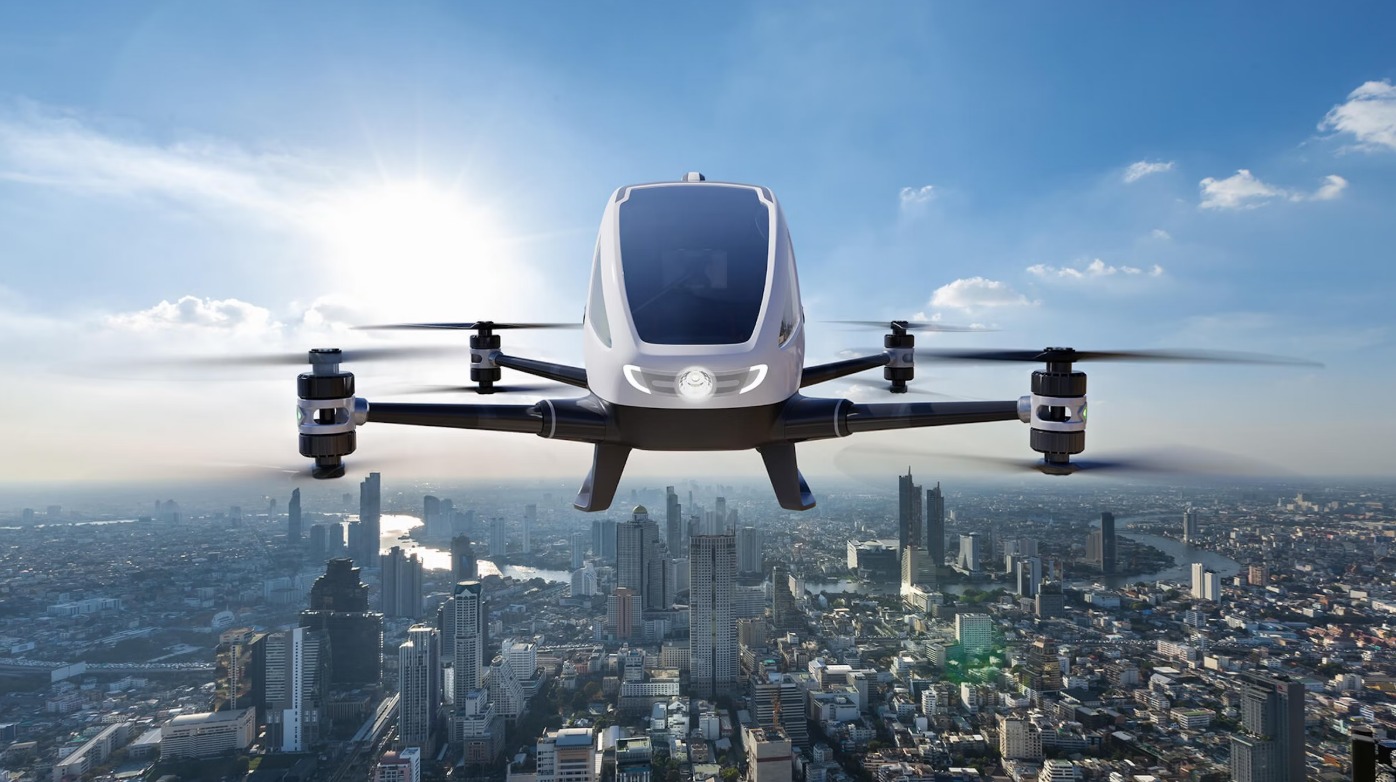|
Getting your Trinity Audio player ready...
|
Introduction to eVTOL aircraft
Electric Vertical Take-Off and Landing (eVTOL) aircraft represent a transformative shift in aviation technology. They promise to revolutionize urban mobility, reduce traffic congestion, and mitigate environmental impacts associated with traditional aviation.
These innovative aircraft are designed to combine the efficiency of electric propulsion with the versatility of vertical takeoff and landing capabilities, enabling them to operate in urban environments where space is limited and traditional runways are impractical.
A short history of eVTOLs
The concept of eVTOLs dates back to the mid-20th century with experimental aircraft like the Hawker Siddeley Harrier, a jet-powered VTOL aircraft developed in the 1960s. However, these early models were not electric. The modern eVTOL movement began to gain traction in the 2010s, driven by advances in electric propulsion, battery technology, and the growing demand for sustainable urban transportation solutions.
One of the earliest significant milestones in the eVTOL space was the formation of companies like Joby Aviation and Volocopter, which began developing electric VTOL prototypes. Over the past decade, numerous startups and established aerospace companies have entered the market, accelerating the development and commercialization of eVTOL technology.
How eVTOL aircraft work
Electric propulsion
At the core of eVTOL technology is electric propulsion, which relies on electric motors powered by batteries or other electric power sources. This contrasts with traditional aircraft that use internal combustion engines. Electric motors offer several advantages, including lower noise levels, reduced emissions, and greater efficiency. The electric powertrain of an eVTOL typically consists of a battery pack, electric motors, and power electronics that manage energy distribution.
Vertical takeoff and landing
eVTOL aircraft are designed to take off and land vertically, similar to helicopters. This capability is achieved through various rotors, ducted fans, or tiltrotor configurations. The vertical lift is typically provided by multiple rotors distributed around the aircraft, which can be tilted or adjusted to transition from vertical to horizontal flight. During takeoff and landing, the rotors are positioned to provide vertical thrust, while in cruise flight, they can be tilted to generate forward thrust and lift.
Autonomous and piloted operation
Many eVTOL designs incorporate advanced avionics and autonomous flight systems to enhance safety and operational efficiency. Autonomous flight technology allows these aircraft to operate with minimal human intervention, reducing the potential for human error. However, some eVTOLs are also designed to be piloted remotely or by an onboard pilot, providing flexibility in operation and ensuring compliance with existing aviation regulations.
Various types of eVTOLs
The eVTOL market is diverse, with numerous designs and configurations tailored to specific use cases and operational environments. These designs can be broadly categorized into the following types:
- Multirotor eVTOLS
- Lift + Cruise eVTOLS
- Tiltrotor and Tiltwing eVTOLs
- Vectored Thrust eVTOLs
Let’s take a closer look at each of these types:
Multirotor eVTOLs
Multirotor eVTOLs resemble large drones with multiple rotors (typically four to eight) that provide lift and thrust. These aircraft are known for their simplicity, stability, and ease of control. They are well-suited for short-range urban air mobility (UAM) applications, such as air taxis and delivery drones. Examples include the Volocopter 2X and the EHang 216.
Lift + cruise eVTOLs
Lift + Cruise eVTOLs use separate rotors or propellers for vertical lift and horizontal cruise. This configuration allows for optimized performance during different phases of flight. Vertical lift is provided by rotors that operate during takeoff and landing, while forward thrust is generated by fixed-wing propellers during cruise flight. The Joby Aviation S4 is a prominent Lift + Cruise eVTOL example.
Tiltrotor and tiltwing eVTOLs
Tiltrotor and tilt-wing eVTOLs have rotors or wings that can tilt to transition between vertical and horizontal flight modes. In tiltrotor designs, the rotors are mounted on rotating nacelles, allowing them to provide vertical lift during takeoff and landing, as well as forward thrust during cruise. Tilt-wing designs, on the other hand, feature wings that tilt along with the rotors. These configurations offer high-speed and long-range capabilities. Examples include the Lilium Jet and the Bell Nexus.
Vectored thrust eVTOLs
Vectored thrust eVTOLs use a combination of fixed wings and rotors or fans that can be vectored to provide both vertical lift and forward thrust. This design allows for efficient cruise flight and enhanced maneuverability. Vectored thrust systems can be more complex but offer advantages in terms of performance and range. The Archer Aviation Maker is an example of a vectored thrust eVTOL.


